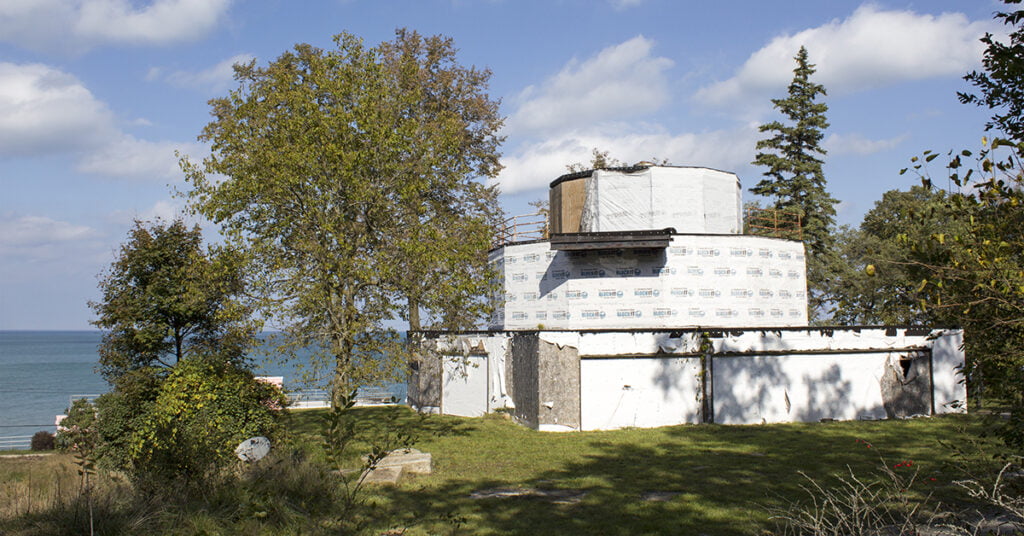Taking the LEED in Northwest Indiana.
by Jacqueline von Ogden
In 1993, the concept of Leadership in Energy and Environmental Design (LEED) certification standards was not publically conceptualized. Five years later, when the U.S. Green Building Council (USGBC) developed LEED certification, a mere mention of the word LEED was known to raise an eyebrow. Now, in 2013 it has become a standard, or as some might say an expectation.
Google “LEED” and you'll get pages and pages of search results regarding LEED certification and standards. And though many believe LEED is fairly new to the scene, to put it into perspective, the concept is older than web search engine Google itself, which just celebrated its 15th birthday this year. But LEED certification is not the only focus for businesses. “Green thinking,” focusing on the advantages and savings, is here to stay.
Carl Lisek, co-founder of Legacy Environmental Services in Crown Point, believes the public is just beginning to realize or conceptualize the true outcomes for businesses that participate in “greener ways” of doing business. “Organizations are being certified in green building, and they are looking at the true cost of ROI to incorporate into their thinking. ‘Green thinking' is now part of everyone's vocabulary, for businesses and even for homeowners. We've come a long way,” says Lisek.
Though many businesses may be concerned about the criteria or costs associated with LEED certification, Lisek believes educating the general public about what LEED truly is and how companies can incorporate ideas into their ways of doing business is key. “For the last 10 years we have been working on creating a green partnership for the future. Every little step is important to the future of Northwest Indiana, but it is also important to the Midwest as well,” Lisek says. Legacy Environmental Services not only identifies an organization's environmental impact, but looks at the associated costs for sustainability. Of course, looking at costs and the bottom line is nothing new to business owners.

concrete from the site, with a strong emphasis on reducing energy consumption.
David Wilkinson, president of Strack & Van Til, understands the business aspect to “thinking green.” “Grocery stores use a lot of energy. It makes sense to keep energy costs down,” says Wilkinson. The Cedar Lake store, which publicly opened its doors in May 2013, was built on an existing site. “We used all of the concrete that was onsite, recycled it, brought it back, and it was used as a base for the current store,” says Wilkinson.
With many of the chain's stores being remodeled, and though there is not currently a plan to build another store with LEED designation, Wilkinson notes the focus is on supermarket efficiency.

“Our Cedar Lake store has a polished, concrete floor. No chemicals and no stripping required. We have in-house recycling. Plastic bags and cardboard are recycled, and we donate leftover food to local pantries,” says Wilkinson. “Hot water-heat is recaptured, and we use pre-heating to reduce energy. With the natural light and skylight windows, we reduce the lighting in this store alone by 50 percent.”
Numbers don't lie
Benson Gabler, director of sustainability with PNC, the financial-services company that is one of the country's leaders in building with LEED certification, agrees that numbers tell the story. “People are starting to understand savings in energy efficiency. Now LED lights are more expensive, but look at what you save in energy,” Gabler says. And in the savings arena, PNC seems to dominate. Since 2009, 136 PNC buildings have been new construction. And in this four-year time, PNC has saved enough energy to power 25,000 U.S. homes, reduced energy consumption by 9 percent and reduced costs by 15 percent.
PNC's regional office in Indianapolis, which completed construction in November 2010, consisted of 75 percent of purchase materials locally harvested and manufactured, with 28 percent of the materials having recycled content. The building also reduced water consumption by 35 percent. As an organization with more than 200 certified projects, and the first major U.S. bank to apply green standards to all newly constructed or renovated retail offices, PNC recently opened a branch in Fort Lauderdale, Fla., that with green technologies and 211 solar panels, actually produces more energy than it consumes.
The nation's largest green building (and first to be certified under LEED 2.0) is located in Pittsburgh. “The decreased cost in utilities and efficient performing helped put Pittsburgh on the map in the green effort,” says Gabler.
Though some business owners may question the higher construction costs for “going green,” Gabler notes that many need to look at the big picture. “Looking at to what the payback is, we look at every component,” says Gabler. The big picture is set to include PNC's new global headquarters. which is due to open in 2015 as the greenest office tower globally.
Moving Forward
With the flexibility applicable to all building types including commercial, residential and application through design and construction, maintenance and operation, LEED projects are pertinent in almost any setting. “We hired a consultant. Then we used all local contractors. We worked within 150 miles of the site,” Wilkinson says. “Our customers do know it's LEED. And they notice the difference when they enter the store.”
Though there are no current plans for LEED certification with every store, Wilkinson believes that some type green thinking will be utilized with stores moving forward. “It makes sense to do. All will have energy-efficient lights moving forward. Many will have concrete floors now. Our new roof allows more heat to get reflected. It may be more of a challenge with older construction, but with new construction, you can do it.”
Says Lisek of green thinking, “Thankfully, it is becoming more of the norm than the exception. We need to ask ourselves: How can we cut our utilities? We need to be stewards of the environment. Education is the key.”




